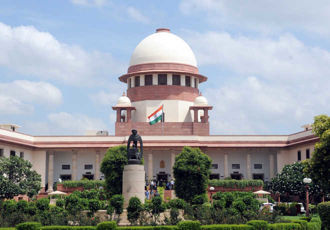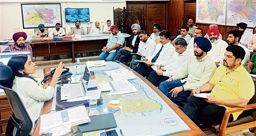Lt Gen Baljit Singh (Retd)
No passport to Tibet would sound a preposterous undertaking in the times we live in, but in 1913 that is precisely what Major FM Bailey (FB) had accomplished and lived to publish the narrative, retrospectively, in 1957. Unarguably, the enterprise was the brainchild of FB but its grand success was simply impossible without the unlimited enthusiasm of his companion, Captain HT Morshead (HM).
Both were born eight months apart in 1882: FB into an Army family at Lahore and HM at Devon (UK) to a family of jurists. FB, graduating from the Royal Military College, Sandhurst, joined the 32 Sikh Pioneers at Darjeeling in 1901 while HM was commissioned from the premier Royal Military Academy, Woolwich, and began his career in the Royal Engineer Corps at Agra in 1902. Two years later, FB’s outfit would march out with Colonel Younghusband’s ‘Mission to Lhasa’ and he would be engulfed inextricably by the spirit of exploration, become fluent in Tibetan dialects, head India’s outposts in Tibet at Gyantse and Shigatse, be absorbed in the Political Branch of Foreign Department and become a close confidant of the 13th Dalai Lama!
As for HM, his scientific propensities would lead him to the the Survey of India, Dehradun, become a lead map-surveyor of what is Arunachal today, earn the DSO in WW I, member of the first two Everest expeditions and much else.
Seized by the explorer’s restlessness in 1912, FB travelled through Russia to Peking and, in the last leg, on foot from Chengdu to Sadiya. Even though this was a great accomplishment, he was censured for overstaying leave, fined two months’ salary and summoned to Shimla to write a report of his journey. This was where he came to the notice of Sir Henry McMahon (Foreign Secretary), became his protégé, and picked up whispers about the likelihood of an international treaty involving China, Tibet and India to delineate the boundary between Tibet and Assam.
FB was aghast at such a treaty “while that border region remained unmapped”. He got acquiescence from Sir Henry for duty in the Mishmi valley ostensibly to solve the mystery of the Tsangpo gorge falls, rumoured to be greater than Niagara. But this was a mere smokescreen because “the realisation flashed of getting through to Tibet from Assam side... but one problem presented itself, such an expedition could not be undertaken alone”.
FB reached Mipi (today’s Anini township) in February 1913, sought out HM and explained his intent to cross over to Tibet from Showa village (150 miles north of Mipi), then turning west, travel up-river in the Tsangpo valley, mapping all the while the Himalayan watershed ridge line up to the Assam-Bhutan junction and then turning southward back to Assam, make their way to Simla with the tentative blueprint of the mapped international boundary between Assam and Tibet!
Now, as regards the logistics and permission to enter Tibet, FB’s fluency in Tibetan dialects, his friendship with and possession of photographs of the Dalai Lama and the Tashi Lama were to prove of talismanic properties. Besides, he knew the custom that when any Tibetan official travelled, he was furnished a document called the ‘Lamyik’, which “entitled him to call upon villages to supply food and lodging and transport up to the next stage of journey”.
In five-and-a-half months they covered “...1,500-mile (2,414-km) journey on foot through un-surveyed and unknown country in Tibet.... the mystery of Tsangpo gorges was solved; the country forming the border between Tibet and Assam was mapped”.
Once the data was transposed on map sheets as the McMahon Line, the duo was summoned ahead of the four-month-long negotiations between the representatives of India, Tibet and China. Ultimately, the Simla Convention on April 27, 1914 and the appended maps showed for the first time the McMahon Line as the acknowledged frontier between India and Tibet.


























